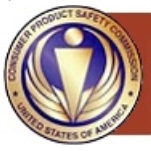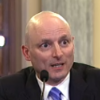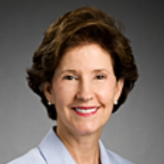The U.S. Consumer Product Safety Commission (CPSC) is an independent federal agency whose duty is to protect consumers from harmful or dangerous products sold in the United States. The CPSC works to guard the public from products that pose a fire, electrical, chemical or mechanical hazard or can injure children. Examples of products the commission examines include toys, cribs, power tools, cigarette lighters and household chemicals. Toys have been an especially hot topic for the commission, as findings have revealed numerous products marketed towards children that contained hazardous substances, such as lead. The CPSC has come under repeated criticism for failing to protect the public. The George W. Bush administration, which, according to consumer organizations, placed a low priority on consumer safety, was motivated by strong Congressional support to sign into law the Consumer Product Safety Improvement Act of 2008, which established product manufacturing and testing requirements, penalties for violations, whistleblower protections, and a database for product information and consumer reporting
Prior to the establishment of the Consumer Product Safety Commission (CPSC), the federal government relied on a mixture of laws and agencies to protect consumers from faulty products. The Flammable Fabrics Act of 1953 was adopted to protect the public against the unreasonable risk of injury from fire. Three years later, Congress passed the Refrigerator Safety Act of 1956, which required manufacturers to design all refrigerators so they could be opened easily from the inside. The legislation was prompted by dozens of deaths resulting from children climbing into abandoned refrigerators and suffocating when the doors closed.
The Consumer Product Safety Commission spent $99.9 million from 2007-2011 on private contractors. A total of 4,267 contractor transactions paid for goods and services provided to the commission, such as ADP software ($17.1 million), data collection services ($16.2 million) and telecommunications services ($10.1 million).
CPSC Commissioners—a Chronology
- Table of Contents
- Overview
- History
- What it Does
- Where Does the Money Go
- Controversies
- Suggested Reforms
- Comments
- Leave a comment


On March 31, 2014, President Barack Obama nominated Elliot F. Kaye to be chairman of the Consumer Product Safety Commission (CPSC). Kaye will be one of five members on the CPSC, which he served as a staffer for many years.
Kaye, who’s from New York, graduated from Northwestern University in 1991 with a B.S. in journalism. His future was in public service however and in 1993 he came to Washington as an unpaid intern on Capitol Hill. He worked in the offices of Rep. Earl Hutto (D-Florida), as communications director and chief of staff for Rep. Pat Danner (D-Missouri) and as chief of staff to Rep. John Tierney (D-Massachusetts) until 2001.
Kaye then left Washington to attend law school at New York University. He received his J.D. in 2004, and from 2005 to 2006 clerked for U.S. Circuit Court Judge Sterling Johnson in the Eastern District of New York.
In 2006, while working for the firm of Cooley Godward Kronish in New York, Kaye took the case of Salifou Yankene, a former Ivory Coast child soldier who had requested asylum upon landing in New York. Kaye was able win asylum for Yankene. In 2007, Kaye joined the firm of Hogan Lovells, where he was an associate until 2010.
Kaye moved to the CPSC as senior counsel in 2010 and in 2012 was named deputy chief of staff along with his duties as senior counsel. In 2013, Kaye was named chief of staff and chief counsel to CPSC chairwoman Inez Tenenbaum. Since Tenenbaum left in late 2013, Kaye has been the commission’s executive director.
While at CPSC, Kaye has done extensive work to minimize brain and head injuries resulting from youth football. Another project of Kaye’s was warning about the risks of coin, or button, batteries. These batteries are often swallowed by children, resulting in severe chemical burns.
Kaye’s wife, Kanae, is the country officer for Haiti at the World Bank. They have two sons, Noah and Ethan.
-Steve Straehley
To Learn More:
Elliot Kaye Nominated As New Chairman Of The CPSC (by Matthew R. Howsare, Mondaq)

One of Barack Obama’s most important victories during his run for the Democratic nomination in 2008 came in South Carolina, where he easily defeated rival Hillary Clinton. Of the many local officials who backed Obama over Clinton, Inez Moore Tenenbaum was the first major state Democrat to endorse his campaign and help him secure the South Carolina primary. This connection, more than anything else, explains why Tenenbaum—a former state school superintendent with no real background in consumer protection—was chosen to take over the Consumer Product Safety Commission (CPSC). She was confirmed by the Senate as the Chair of the CPSC on June 19, 2009.
- Latest News
- D.C. Public Schools will Teach all Second-Graders to Ride a Bike
- New Rule in Germany Limits Sales of Sex-Themed E-Books to 10pm to 6am
- What Happened to the 6-Year-Old Tibetan Boy the Chinese Government Kidnapped 20 Years Ago?
- U.S. Ambassador to Turkey Photoshops his Hair Color to Mock Turkish Mayor
- Mystery Artist Calls Attention to Unfixed Potholes by Drawing Penises around Them
The U.S. Consumer Product Safety Commission (CPSC) is an independent federal agency whose duty is to protect consumers from harmful or dangerous products sold in the United States. The CPSC works to guard the public from products that pose a fire, electrical, chemical or mechanical hazard or can injure children. Examples of products the commission examines include toys, cribs, power tools, cigarette lighters and household chemicals. Toys have been an especially hot topic for the commission, as findings have revealed numerous products marketed towards children that contained hazardous substances, such as lead. The CPSC has come under repeated criticism for failing to protect the public. The George W. Bush administration, which, according to consumer organizations, placed a low priority on consumer safety, was motivated by strong Congressional support to sign into law the Consumer Product Safety Improvement Act of 2008, which established product manufacturing and testing requirements, penalties for violations, whistleblower protections, and a database for product information and consumer reporting
Prior to the establishment of the Consumer Product Safety Commission (CPSC), the federal government relied on a mixture of laws and agencies to protect consumers from faulty products. The Flammable Fabrics Act of 1953 was adopted to protect the public against the unreasonable risk of injury from fire. Three years later, Congress passed the Refrigerator Safety Act of 1956, which required manufacturers to design all refrigerators so they could be opened easily from the inside. The legislation was prompted by dozens of deaths resulting from children climbing into abandoned refrigerators and suffocating when the doors closed.
The Consumer Product Safety Commission spent $99.9 million from 2007-2011 on private contractors. A total of 4,267 contractor transactions paid for goods and services provided to the commission, such as ADP software ($17.1 million), data collection services ($16.2 million) and telecommunications services ($10.1 million).
CPSC Commissioners—a Chronology
Comments


On March 31, 2014, President Barack Obama nominated Elliot F. Kaye to be chairman of the Consumer Product Safety Commission (CPSC). Kaye will be one of five members on the CPSC, which he served as a staffer for many years.
Kaye, who’s from New York, graduated from Northwestern University in 1991 with a B.S. in journalism. His future was in public service however and in 1993 he came to Washington as an unpaid intern on Capitol Hill. He worked in the offices of Rep. Earl Hutto (D-Florida), as communications director and chief of staff for Rep. Pat Danner (D-Missouri) and as chief of staff to Rep. John Tierney (D-Massachusetts) until 2001.
Kaye then left Washington to attend law school at New York University. He received his J.D. in 2004, and from 2005 to 2006 clerked for U.S. Circuit Court Judge Sterling Johnson in the Eastern District of New York.
In 2006, while working for the firm of Cooley Godward Kronish in New York, Kaye took the case of Salifou Yankene, a former Ivory Coast child soldier who had requested asylum upon landing in New York. Kaye was able win asylum for Yankene. In 2007, Kaye joined the firm of Hogan Lovells, where he was an associate until 2010.
Kaye moved to the CPSC as senior counsel in 2010 and in 2012 was named deputy chief of staff along with his duties as senior counsel. In 2013, Kaye was named chief of staff and chief counsel to CPSC chairwoman Inez Tenenbaum. Since Tenenbaum left in late 2013, Kaye has been the commission’s executive director.
While at CPSC, Kaye has done extensive work to minimize brain and head injuries resulting from youth football. Another project of Kaye’s was warning about the risks of coin, or button, batteries. These batteries are often swallowed by children, resulting in severe chemical burns.
Kaye’s wife, Kanae, is the country officer for Haiti at the World Bank. They have two sons, Noah and Ethan.
-Steve Straehley
To Learn More:
Elliot Kaye Nominated As New Chairman Of The CPSC (by Matthew R. Howsare, Mondaq)

One of Barack Obama’s most important victories during his run for the Democratic nomination in 2008 came in South Carolina, where he easily defeated rival Hillary Clinton. Of the many local officials who backed Obama over Clinton, Inez Moore Tenenbaum was the first major state Democrat to endorse his campaign and help him secure the South Carolina primary. This connection, more than anything else, explains why Tenenbaum—a former state school superintendent with no real background in consumer protection—was chosen to take over the Consumer Product Safety Commission (CPSC). She was confirmed by the Senate as the Chair of the CPSC on June 19, 2009.
- Latest News
- D.C. Public Schools will Teach all Second-Graders to Ride a Bike
- New Rule in Germany Limits Sales of Sex-Themed E-Books to 10pm to 6am
- What Happened to the 6-Year-Old Tibetan Boy the Chinese Government Kidnapped 20 Years Ago?
- U.S. Ambassador to Turkey Photoshops his Hair Color to Mock Turkish Mayor
- Mystery Artist Calls Attention to Unfixed Potholes by Drawing Penises around Them





Comments